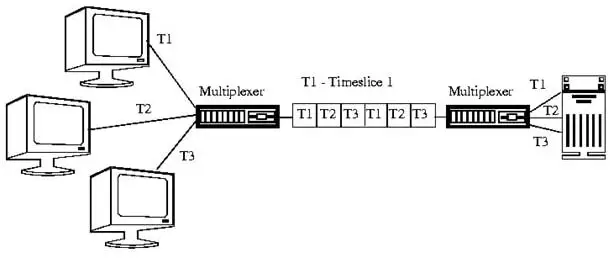In the intricate dance of data communication, efficiency is key. Statistical Multiplexing emerges as a masterful choreographer, orchestrating the flow of information from multiple channels into a single, harmonious stream. This technique, a significant evolution from rigid Time-Division Multiplexing (TDM), adapts in real-time to the varying demands of network traffic. It ensures that only the channels with packets to send consume bandwidth, optimizing the use of available resources.
In this article, we’ll unravel the mechanisms of Statistical Multiplexing, explore its advantages over traditional methods, and delve into its applications in modern networks. From the dynamics of bandwidth allocation to the nuances of data compression and error correction, we’re set to explore how Statistical Multiplexing enables our data-driven world to operate with enhanced efficiency and agility.
In this article:
- What is Statistical Multiplexing?
- How Statistical Multiplexing Works?
- Advantages of Statistical Multiplexing
- Applications of Statistical Multiplexing
- References

1. What is Statistical Multiplexing?
Statistical multiplexing is a technique that maximizes channel efficiency by dynamically allocating bandwidth to active channels within a network. Unlike time-division multiplexing (TDM), where each channel is assigned a fixed timeslot—regardless of whether it has data to transmit—statistical multiplexing only assigns bandwidth to channels when they have data packets ready for transmission. This method is particularly advantageous in environments with bursty traffic patterns, where channels are not always transmitting.
2. How Statistical Multiplexing Works?
Statistical multiplexing dynamically allocates bandwidth to each channel on an as-needed basis. This is in contrast to time-division multiplexing (TDM) techniques, in which quiet devices use up a portion of the multiplexed data stream, filling it with empty packets. Statistical multiplexing allocates bandwidth only to channels that are currently transmitting. It packages the data from the active channels into packets and dynamically feeds them into the output channel, usually on a FIFO (first in, first out) basis, but it’s also able to allocate extra bandwidth to specific input channels.
Statistical multiplexing devices usually support other features, such as the following:
- Store-and-forward error detection and correction capability:
- Identifies which channel sent each packet of data and corrects errors that occur
- Data compression:
- Increases the amount of data that can be sent per packet

Statistical multiplexing is sometimes referred to as statistical time-division multiplexing (STDM) or statistical packet multiplexing (SPM), but the shorter term is used more often.
3. Advantages of Statistical Multiplexing
One of the primary advantages of statistical multiplexing is its efficient use of bandwidth. Because it only allocates bandwidth to active channels, it can significantly reduce wasted capacity that would otherwise be reserved for idle channels in a TDM system. This efficiency leads to dynamic channel allocation, ensuring active channels are given precedence, and reduces latency for time-sensitive data. Overall, this results in improved throughput and better network performance.
4. Applications of Statistical Multiplexing
Statistical multiplexing is widely used in telecommunications, especially in situations where bandwidth is precious and must be utilized with maximum efficiency. In network routers and switches, it allows for more effective data flow management, ensuring that packets are forwarded without unnecessary delay. In the realm of video streaming and broadcast, statistical multiplexing is critical for delivering multiple channels of content over a single bandwidth-limited medium, ensuring that viewers receive a continuous, high-quality experience.
Note:
A multiplexer that is capable of statistically multiplexing several data streams together is sometimes called a statmux. If you have a statmux at each end of a digital line, the receiving statmux can identify the channel of each packet sent by the sending statmux and demultiplex the data stream into its original data channels.
5. References
- “Computer Networks” by Andrew S. Tanenbaum & David J. Wetherall
- This book is a comprehensive source for networking theory, including multiplexing techniques. It offers a detailed exploration of various network designs and protocols where statistical multiplexing plays a role.
- “Data and Computer Communications” by William Stallings
- Stallings’ work is known for its clarity and thoroughness in presenting complex networking concepts, including multiplexing. It delves into the specifics of how statistical multiplexing operates and its applications in modern communications.